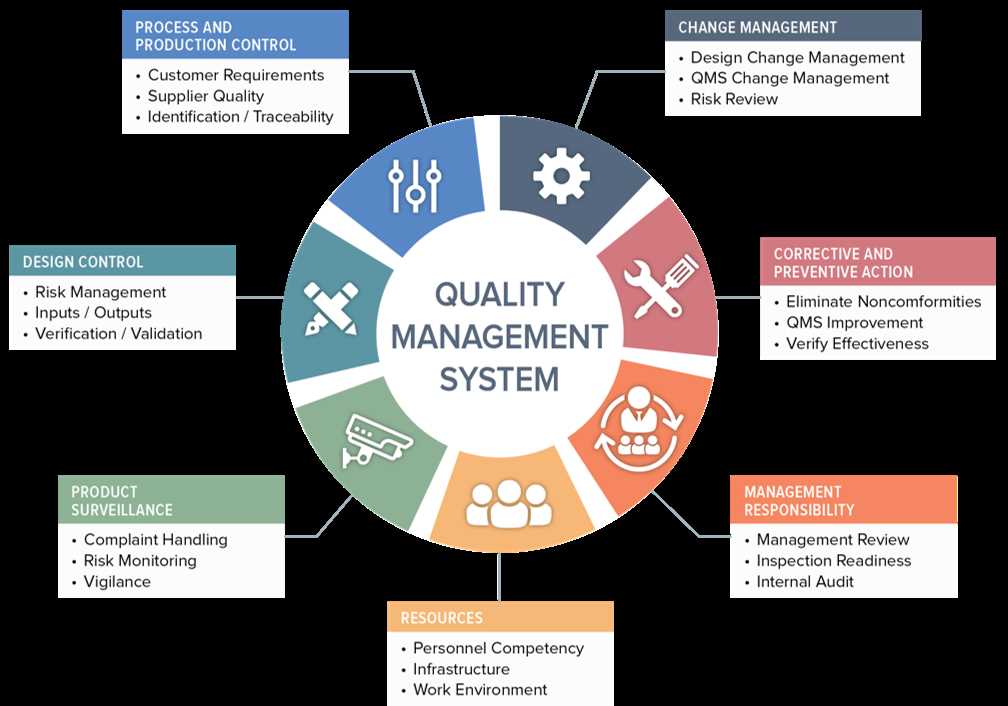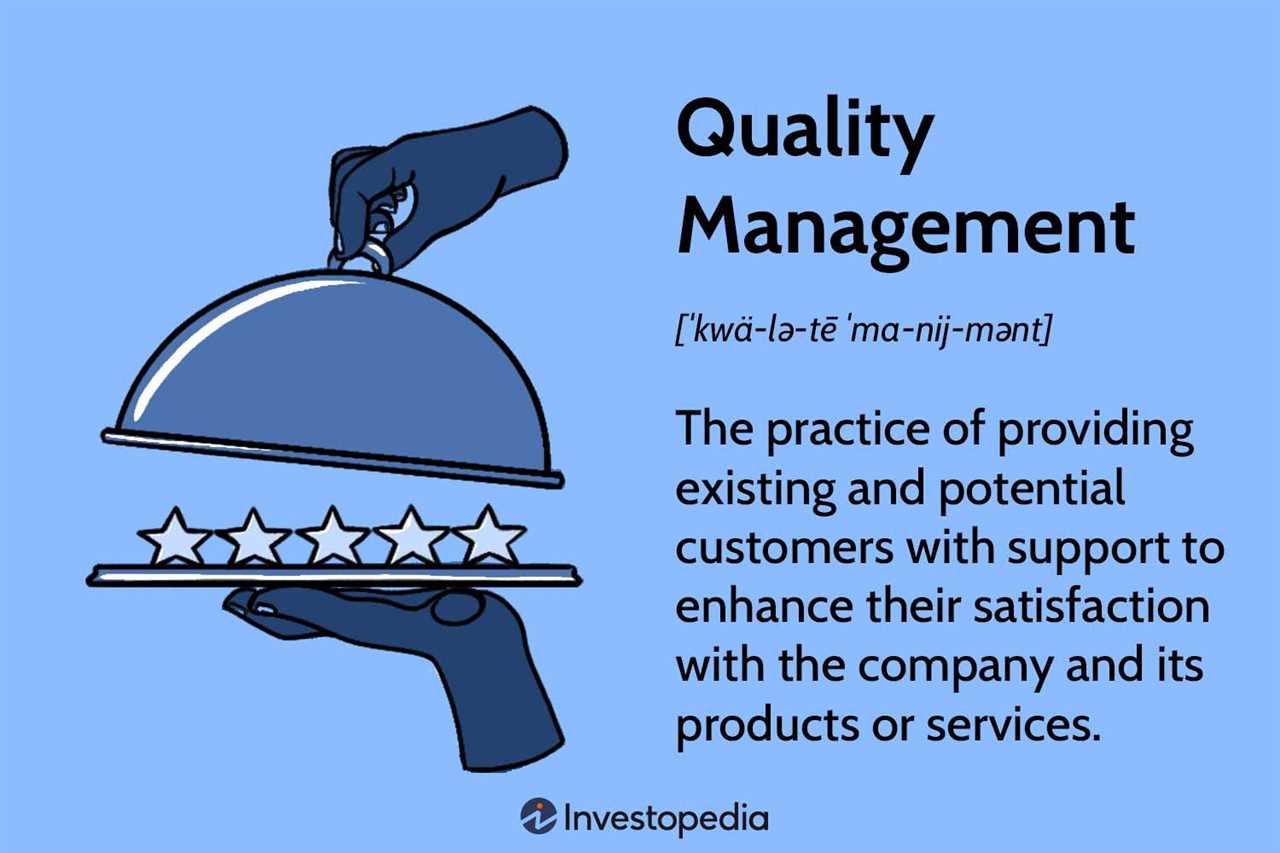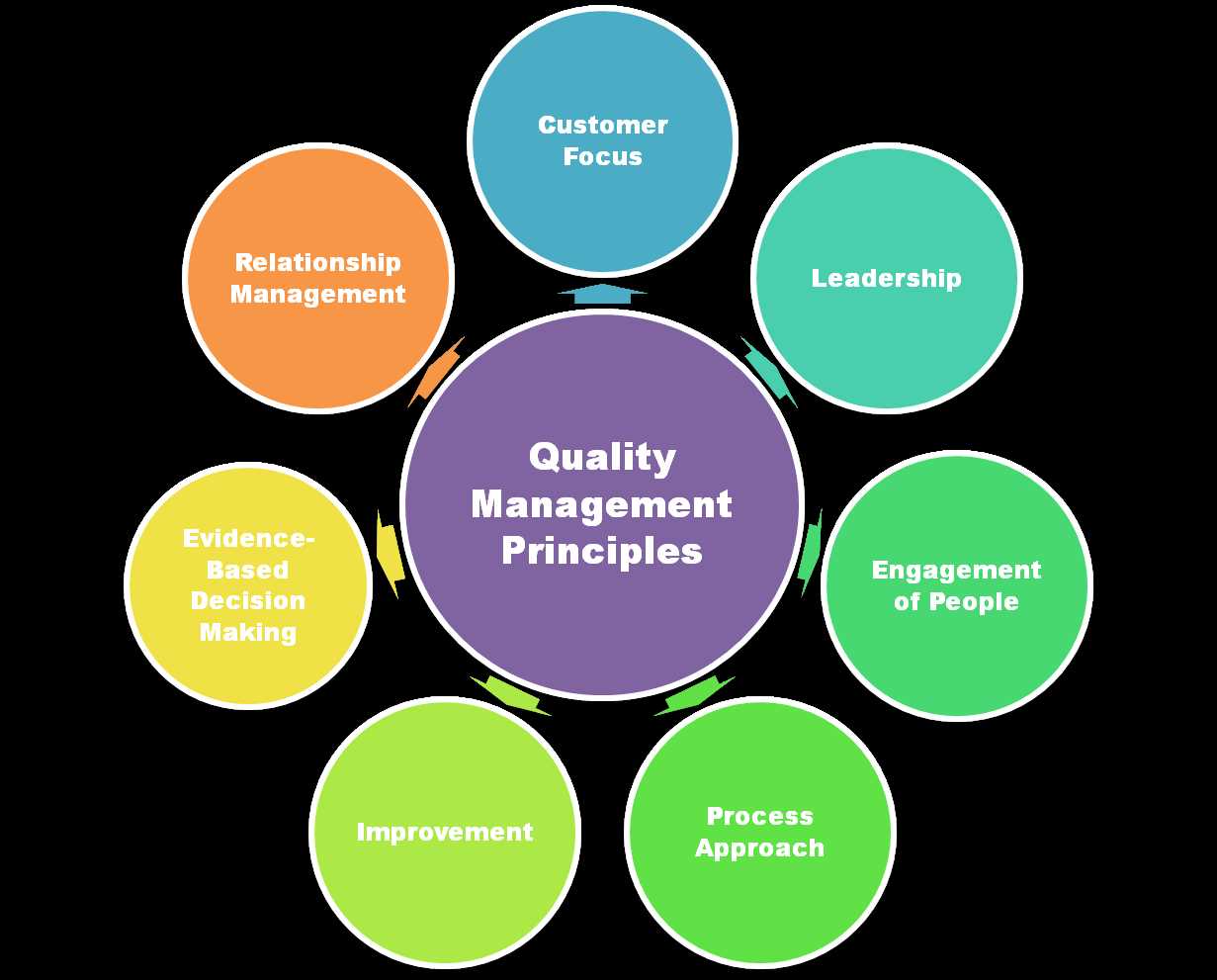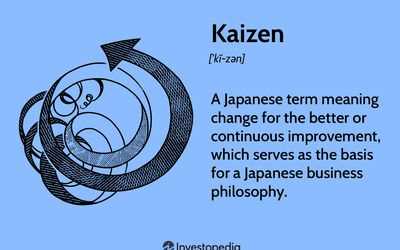Quality Management: Definition and Example

Quality management is a systematic approach to ensuring that products or services meet or exceed customer expectations. It involves the continuous improvement of processes, products, and services to deliver high levels of quality and customer satisfaction.
One example of quality management is the implementation of a quality control system in a manufacturing company. This system includes various processes and procedures to ensure that products meet specific quality standards. It involves conducting regular inspections, testing samples, and monitoring production processes to identify and address any quality issues. By implementing a quality control system, the company can ensure that its products consistently meet or exceed customer expectations.
Another example of quality management is the use of customer feedback to improve products and services. By actively seeking and listening to customer feedback, a company can identify areas for improvement and make necessary changes to enhance quality. This could involve modifying product features, improving service processes, or addressing customer complaints. By continuously seeking customer feedback and making improvements based on that feedback, a company can enhance customer satisfaction and loyalty.
What is Quality Management?

Quality management is a systematic approach that focuses on ensuring that a product or service meets or exceeds customer expectations. It involves the coordination of all activities within an organization to achieve quality objectives and continuously improve processes.
At its core, quality management is about delivering products or services that consistently meet or exceed customer requirements. It involves the implementation of processes, procedures, and systems to monitor and control quality throughout the entire production or service delivery process.
Quality management encompasses various principles and methodologies, such as Total Quality Management (TQM), Six Sigma, and Lean Manufacturing. These approaches aim to eliminate defects, reduce waste, and improve efficiency and customer satisfaction.
One key aspect of quality management is the focus on prevention rather than detection of defects. By implementing robust quality control measures and conducting regular inspections and audits, organizations can identify and address potential issues before they impact the final product or service.
Another important aspect of quality management is the involvement of all employees in the process. Quality is not just the responsibility of the quality control department, but rather a shared responsibility across all levels and functions of the organization. This requires effective communication, training, and empowerment of employees to contribute to the continuous improvement of quality.
Overall, quality management is a strategic approach that helps organizations deliver products or services that meet customer expectations, improve customer satisfaction, and enhance their competitive advantage in the market.
Benefits of Quality Management
Quality management is a crucial aspect of any business, as it ensures that products or services meet or exceed customer expectations. Implementing effective quality management practices can bring numerous benefits to an organization. Here are some of the key advantages of quality management:
1. Improved Customer Satisfaction
By implementing quality management processes, businesses can enhance customer satisfaction. When products or services consistently meet or exceed customer expectations, it leads to higher levels of customer loyalty and repeat business. Satisfied customers are more likely to recommend the company to others, which can result in increased sales and market share.
2. Enhanced Efficiency and Productivity

Quality management systems help businesses streamline their processes and identify areas for improvement. By eliminating inefficiencies and reducing errors, organizations can increase their productivity and overall efficiency. This can lead to cost savings and improved profitability.
3. Stronger Competitive Advantage
Implementing quality management practices can give businesses a competitive edge in the market. When customers perceive a company as consistently delivering high-quality products or services, they are more likely to choose that company over its competitors. Quality management can differentiate a business from its rivals and attract new customers.
4. Better Decision-Making
Quality management systems provide businesses with valuable data and insights that can inform decision-making processes. By monitoring and analyzing quality metrics, organizations can identify trends, patterns, and areas for improvement. This data-driven approach allows for informed decision-making and helps businesses make strategic choices that align with their quality objectives.
5. Continuous Improvement
Quality management is a continuous process that promotes a culture of improvement within an organization. By regularly assessing and evaluating processes, businesses can identify opportunities for enhancement and implement corrective actions. This commitment to continuous improvement ensures that the quality of products or services is consistently maintained or improved over time.
Example of Quality Management in Business

Quality management is a crucial aspect of running a successful business. It involves implementing processes and systems to ensure that products or services consistently meet or exceed customer expectations. Let’s take a closer look at an example of how quality management can be applied in a business setting.
Imagine a company that manufactures and sells electronic devices. They have a reputation for producing high-quality products that are reliable and durable. This reputation has helped them build a loyal customer base and gain a competitive edge in the market.
One of the key elements of their quality management system is a rigorous quality control process. This process starts from the moment raw materials are received and continues throughout the entire production process. Each step is carefully monitored and checked to ensure that the final product meets the company’s quality standards.
For example, during the manufacturing process, random samples of finished products are selected and subjected to various tests and inspections. These tests may include functionality tests, durability tests, and safety tests. Any products that fail to meet the predetermined criteria are rejected and sent back for rework or disposal.
In addition to the quality control process, the company also emphasizes continuous improvement. They regularly collect feedback from customers and use it to identify areas for improvement. This feedback is then used to make necessary changes to their products or processes, ensuring that they stay ahead of the competition and meet evolving customer needs.
Furthermore, the company places a strong emphasis on employee training and development. They provide comprehensive training programs to their employees to ensure that they have the necessary skills and knowledge to produce high-quality products. This includes training on quality control techniques, problem-solving skills, and the company’s quality management system.
By implementing a robust quality management system, this company is able to consistently deliver products that meet or exceed customer expectations. This not only helps them maintain their reputation for quality but also leads to increased customer satisfaction and loyalty.

Emily Bibb simplifies finance through bestselling books and articles, bridging complex concepts for everyday understanding. Engaging audiences via social media, she shares insights for financial success. Active in seminars and philanthropy, Bibb aims to create a more financially informed society, driven by her passion for empowering others.
